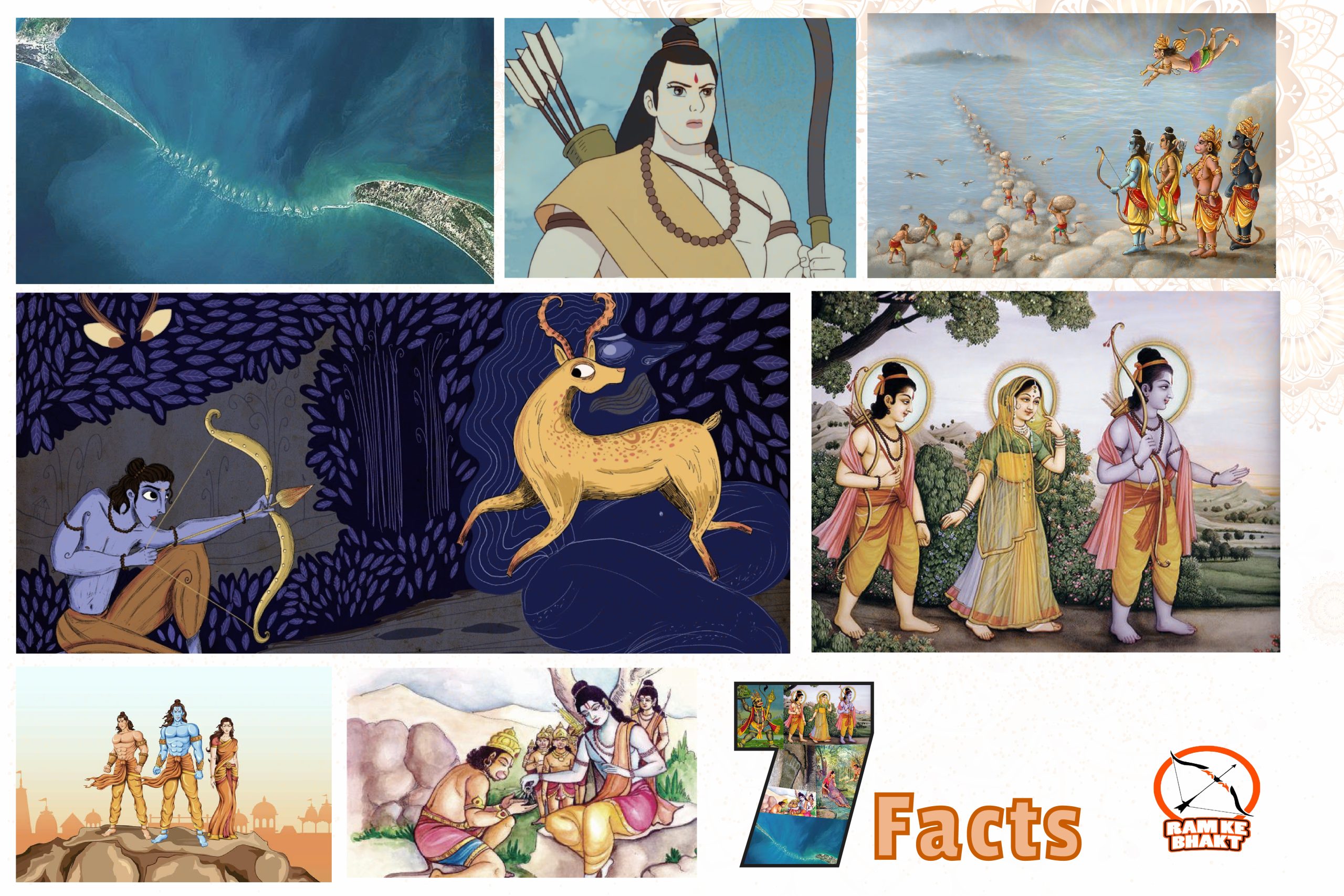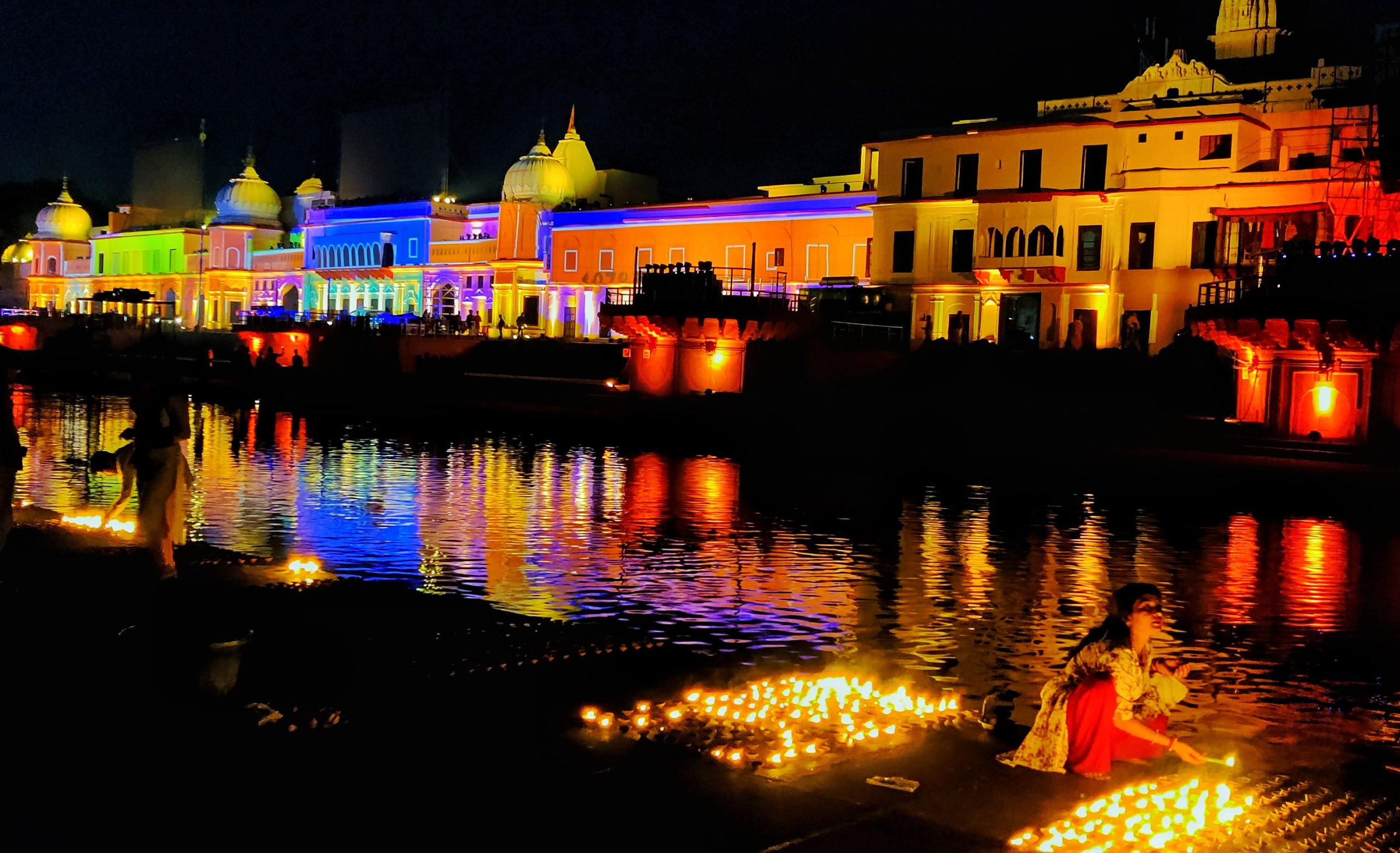
In Southeast Asian households, the Ramayana story has long been a popular folktale. Ramayana is a powerful legendary revolution written by the holy teacher Valmiki, depicting the rich culture of the Indian subcontinent while emphasizing moral principles and ideals.
Some, on the other hand, insist that the Ramayana is not a fabrication of Valmiki’s imagination, but rather an actual historical event, citing reasonable evidence. It’s now a battle between science and religion to determine whether these occurrences are factual or not.
This post will look at seven such truths that will make you rethink history. However, after reading this, you may wish to hear the Ramayana stories from your elders once more, but this time in a different light.

- Ram Setu
Ram Setu, anglicized as Adam’s Bridge, is a natural limestone reef that connects Rameswaram Island on the southeastern coastlines of Tamil Nadu with the Mannar Islands on the northern coasts of Sri Lanka. This 48-kilometer-long natural bridge connects the Gulf of Mannar and the Palk Strait, and it is thought to have formerly connected India and Sri Lanka. This bridge is said to have been described in the epic Ramayana. According to legend, Lord Ram led an army of ape-men known as the Vanara Sena to build Ram Setu in order to cross the vast rivers and reach Sri Lanka in order to rescue Sita from the devouring monarch Ravana. Ram Setu is a man-made bridge that spans the Indian Ocean, according to NASA. This is a beautiful feather in the hat of the Ramayana being an actual historical event. And it’s not simply a legend. Western geologists, on the other hand, believe the Ram Setu is a natural occurrence rather than a supernatural design, despite popular folklore and religious beliefs to the contrary.
2. Rameswaram’s floating stones
Rameswaram is one of Hinduism’s holiest pilgrimage sites. For a variety of reasons, this website is respected and praised. Hindus from India and throughout the world flock to Rameswaram every year to breathe its heavenly air. Despite this, Ram Setu is not the main attraction in Rameswaram; the enigmatic floating rocks come in second. The science-defying strategies used by these floating rocks are well-known. These boulders float on water, according to legend, because of Lord Ram’s blessings and name engraved on them. Scientists have debunked this theory, claiming that the rocks could be pumice stones with a buoyancy that allows them to float on water. Despite this, the mystical belief endures.
3. Is it true that Sanjeevani Booti exists?
Lord Hanuman carried an entire mountain on his shoulder during the war against Ravana, bearing sanjeevani booti, a medical herb that cured Lakshman of his ill wounds. Botanists from Uttarakhand’s Forest Department discovered a similar herb in the Himalayan Mountain range’s Dronagiri Hills in 2016, indicating the presence of the mythical healing herb. The herb was discovered in Jauljibi and was transported to Lucknow’s National Botanical Research Institute for additional investigation and clarification.
4. In some regions of Sri Lanka, the earth is dark.
According to the Ramayana, Ravana, the beast king, put lord Hanuman’s tail on fire as a punishment for sneaking inside Ashoka Vatika, where Sita was held captive, in an attempt to free her. As a form of vengeance, Hanuman hopped over houses and palaces, reducing the entire kingdom to ashes. Geologists have discovered that particular areas of Sri Lanka, supposedly those near and surrounding Ravana’s palace, are darker and burned than the rest of the island. Hindus believe this is due to Hanuman’s curse on Sri Lankan soil, and it serves as proof that the Ramayana is accurate.
5. Resemblance to Ashok Vatika
The attractive garden where Sita was held captive by Ravana and where Hanuman first saw Sita and plotted a scheme to depart with her is reported to be Ashok Vatika. The Ramayana’s Ashok Vatika isn’t just a fiction of Valmiki’s mind; it’s considered to be a real garden with roots in Sri Lanka. Hakgala Botanical Garden, in Seetha Eliya, is now the name of the garden. The famed Seetha Amman Temple, where Sita is said to have slept, as well as the Sita Jharna, where she bathed, are both located here. These colossal proofs that support the historical existence of Ramayana have been treasured by Hindu theologians.
6. Footprints of Hanuman
Hanuman was asked by Ram to spy on Ravana’s kingdom and find Sita, Ram’s stolen wife, in another reference to the dynamic epic. Hanuman was picked for this duty because he had the capacity to easily change his body dimensions. He could transform from a behemoth to a lilliput in an instant. Worshippers have seen gigantic imprints of what appears to be a human foot in India’s Andhra Pradesh, at Lepakshi, and areas of Sri Lanka, around and around Ashokavanam, supporting this evidence. Devotees from all around the world come to worship these huge imprints of a human foot every two years. These massive footprints have been discovered not just in India and Sri Lanka, but also in Malaysia and Thailand. The appearance of the mysterious Hanuman Footprints has yet to be proved scientifically. It is regarded by devotees as a sign from Ram himself.
7. Walking from Sri Lanka to Ayodhya took 21 days
The day of Ravana’s infamous demise, Dussehra is widely commemorated. Ram, Lakshman, and Sita traveled from Lanka to Ayodhya in 21 days after conquering the beast king. Their ascension is widely commemorated as Diwali, the festival of lights, in India. Walking from Sri Lanka to Ayodhya takes exactly 21 days, according to the widely trusted Google Maps. This fact is once again seen by religious devotees as confirmation of the Ramayana’s veracity.
Conclusion
Here’s our take on how the Ramayana might truly be genuine, or at least a little more than legendary fiction. In the event that this article raises or dispels any doubts, we’d like you to be aware that this is merely a hypothesis that may or may not is confirmed by the aforementioned pieces of information.


